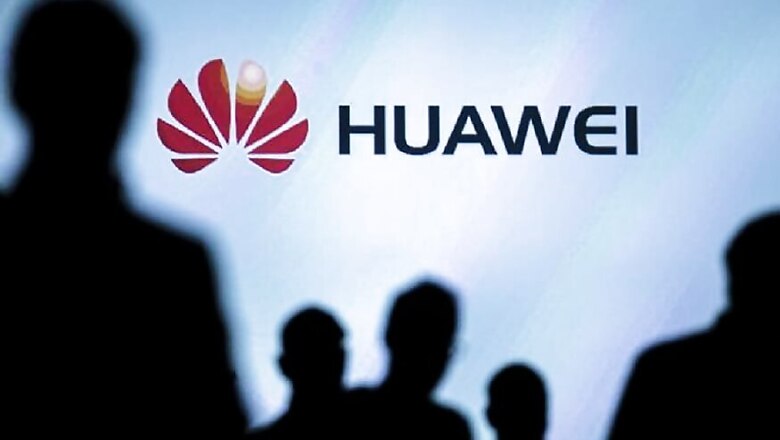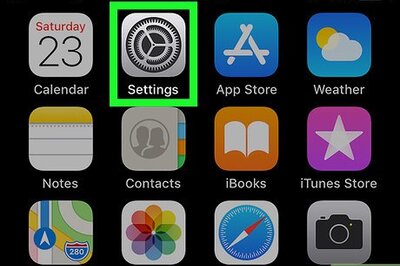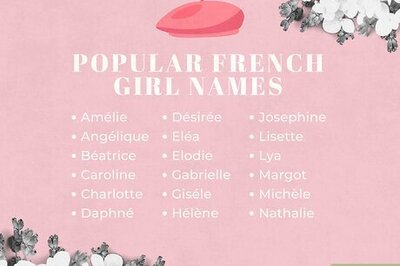
views
Today Huawei Consumer Business Group (CBG) revealed its expected 2016 annual performance figures.
For 2016, CBG predicts sales revenue of 178 billion RMB, 42% up from a year ago, achieving steady growth for the fifth consecutive year.
Smartphone shipments also reached 139 million units with 29% year-on-year growth; according to IDC, the increasing rate of global smartphone shipments was only 0.6% in 2016.
Richard Yu, Huawei CBG CEO, said, “In 2017, we will strengthen our supply chain, channels, R&D, services and any other areas required to streamline our operations, improve the efficiency of our decision-making and implementation, drive our internationalisation strategy and proactively develop future capacity.”Also read: Huawei to Start Smartphone Manufacturing Under Make in IndiaMeaningful innovations and new technology trends
In 2016, Huawei has made breakthroughs in the areas of operating system (EMUI based on Android), dual camera technology, artificial intelligence and more.
For the operating system, in order to solve the issue of Android phones slowing down over time, Huawei software R&D team conduct in-depth optimisation on the Android system.
Based on this work, Huawei unveiled EMUI 5.0 – software that is deeply integrated with the Kirin chipset and contains 20 Huawei patented technologies.
This includes highly optimised system resource allocation controlled by a smart learning system and further optimised Android system applications.
For dual-camera photography, Huawei and Leica jointly developed two generations of dual-camera technology in 2016 that made the Huawei P9 and Mate 9 popular with consumers.
In September 2016, Huawei also founded the Max Berek Innovation Lab with Leica. In the future, this innovation lab will conduct joint research and development in the fields of optical systems, imaging algorithms, VR and AR.
For artificial intelligence, Huawei focused on perception intelligence, cognitive intelligence and computational intelligence, and created an artificial intelligence system based on collaboration between software, the device and the cloud.
Huawei has also made technological breakthroughs in areas such as sensor algorithms, computer vision, search engine, semantic understanding and introduced Huawei situational intelligence (HiBoard) that can provide smarter services to users in different scenarios. Huawei has also launched a desktop search function that enables users to get more results in a shorter time frame with higher accuracy.Also read: ASUS 'Republic of Gamers' Series Gets Desktop, Laptop And Other Additions at Zennovation: CES 2017Huawei market performanceHuawei P9 and P9 Plus global shipments exceeded 10 million units, making them the first Huawei flagship handsets to break 10 million sales.
The Huawei Mate 9 series, shortly after launching in November 2016, faced a supply shortage due to overwhelming demand and its sales in the first two months were 50% higher than those of Mate 8 for the same period.
The Honor flagship smartphone, represented by Honor Magic, showcases Huawei’s exploration into future Intelligent Phone technology.
Meanwhile, Huawei’s cloud service-centered consumer ecosystem is taking shape in China, offering global business opportunities to developers and forming an open and transparent Huawei software ecosystem. Today, Huawei CBG has over 200 million cloud service mobile users and over 22 million registered developers. Partners were sharing over 2.8 billion RMB in revenue in 2016 through Huawei cloud services.Services by Huawei
While developing its product portfolio in 2016, Huawei also invested in building its global channels, service infrastructure and brand to ensure high customer satisfaction and positive brand perception.
For pre-sales and after-sales, Huawei built five global service centres that support 105 countries through hotline services.
Huawei also has over 460 service stores covering 45 countries around the world.
In 2016, the Huawei app store distributed a total of 45 billion applications. Huawei Pay supports over 32 bank cards in China as well as public transportation card services in Beijing, Shanghai, Guangzhou and Shenzhen.
An overseas-based basic cloud service is also under construction. Recently, Huawei has successfully launched online themes and a magazine lock screen in over 170 countries.
For brand building, in 2016 Huawei recruited global football icon, Lionel Messi to be a Huawei ambassador and Hollywood stars Henry Cavill and Scarlett Johansson as P9 spokespeople.
Huawei also cooperated with international high-end fashion platform VOGUE and other fashion week events.
Huawei was listed again in the Interbrand Top 100 Global Brands, ranking 72th; while it entered the BrandZ Top 100 Most Valuable Global Brands at 50. Also read: Self-Driving Cars, Artificial Intelligence to Rule CES 2017




















Comments
0 comment